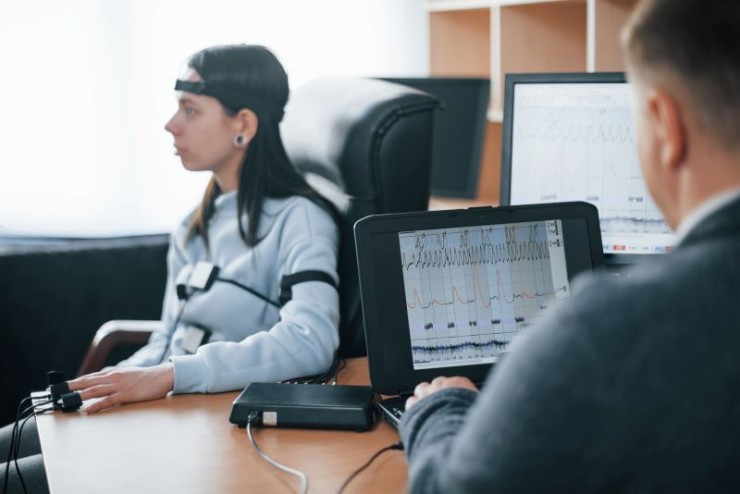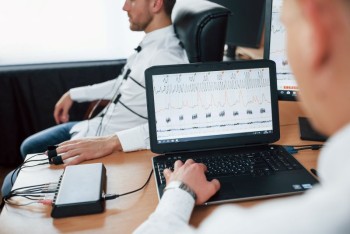
Electromyography (EMG) and Nerve Conduction Velocity (NCV) emerge as complementary diagnostic tools, offering a comprehensive understanding of the intricate interplay between muscles and nerves.
EMG NCV All Limbs in India with Cost
Integrated Electromyography (EMG) and Nerve
Conduction Velocity (NCV) for All Limbs in Detail
Introduction to Integrated Limb Assessment with Electromyography (EMG) and Nerve Conduction Velocity (NCV)
Integrated assessment of both muscle and nerve function is essential for unraveling complex neuromuscular conditions affecting upper and lower limbs. Electromyography (EMG) and Nerve Conduction Velocity (NCV) emerge as complementary diagnostic tools, offering a comprehensive understanding of the intricate interplay between muscles and nerves.
Purpose of Integrated
EMG and NCV Limb Assessment
The integrated approach of combining EMG and NCV serves the purpose of providing a holistic diagnosis of neuromuscular conditions. By identifying complex issues affecting both upper and lower limbs, healthcare professionals can tailor treatment plans more precisely, addressing the nuances of interconnected muscle and nerve function.
Principles of Integrated EMG and NCV Limb Assessment
Integrated EMG and NCV limb assessment involve the simultaneous evaluation of muscle and nerve function. This coordinated approach allows for a comprehensive understanding of neuromuscular conditions, where abnormalities in one aspect may influence the other. The principles of this integrated assessment lie in capturing synchronized data for nuanced insights.
Equipment Used in
Integrated EMG and NCV Limb Assessments
The equipment used in integrated assessments includes a combination of EMG electrodes, amplifiers, and NCV stimulators/recorders. This ensures synchronized and accurate recordings for both upper and lower limbs, facilitating a detailed examination of the complex interactions between muscles and nerves.
Procedure for Integrated EMG and NCV Limb Assessments
The procedure for integrated EMG and NCV assessments follows sequential steps in conducting combined tests. Coordinated patient positioning and electrode placement are crucial to obtaining simultaneous recordings for upper and lower limbs. This comprehensive approach allows healthcare professionals to correlate findings effectively.
Interpretation of Integrated EMG and NCV Results in Limb Assessments
Interpreting integrated EMG and NCV results involves analyzing combined data for nuanced insights into complex neuromuscular conditions. By correlating findings, healthcare professionals can unravel the intricacies of disorders affecting both muscle and nerve functionality in upper and lower limbs.
Applications of Integrated EMG and NCV in Limb Assessments
The integrated approach of EMG and NCV has diverse applications, aiding in the diagnosis of conditions such as peripheral neuropathy and myopathy. This combined assessment provides tailored insights for upper and lower limb disorders, ensuring a more accurate and holistic understanding of neuromuscular health.
Types of Integrated EMG and NCV Tests for Limb Assessment
Integrated EMG and NCV tests involve simultaneous Motor NCV and Needle EMG for both upper and lower limbs. This dual evaluation of nerve conduction and muscle activity provides a comprehensive picture, allowing healthcare professionals to identify specific issues affecting upper and lower limbs.
Integrated EMG and NCV
in Neurology for Limb Disorders
In neurology, integrated EMG and NCV assessments enhance diagnostic capabilities for neurological conditions impacting upper and lower limbs. The combined results contribute to more informed treatment strategies, guiding healthcare professionals in managing complex limb-related disorders.
Comparative Analysis with Other Limb Assessment Techniques
Comparing integrated EMG and NCV with individual EMG or NCV tests highlights the synergistic benefits of combined assessments. While individual tests offer valuable insights, the integrated approach provides a more comprehensive understanding of complex neuromuscular conditions affecting upper and lower limbs.
Challenges and Considerations in Conducting Integrated EMG and NCV Limb Assessments
Integrated assessments present challenges in simultaneous testing, requiring careful consideration of complexities. Addressing these challenges involves ensuring patient comfort and cooperation during the combined procedure, contributing to the reliability of results for both upper and lower limbs.
Recent Technological Advancements in Integrated EMG and NCV Limb Assessments
Recent technological advancements in integrated EMG and NCV assessments include innovations improving synchronization and data integration. These developments enhance the accuracy and efficiency of simultaneous upper and lower limb evaluations, providing healthcare professionals with more reliable diagnostic information.
Future Trends in Integrated EMG and NCV Technology for Limb Assessments
The future of integrated EMG and NCV technology is anticipated to witness developments in both methodology and technology. Predicted advancements include further integration with artificial intelligence for data analysis, miniaturization of equipment, and advancements in telemedicine applications, shaping the landscape of upper and lower limb assessments.
Case Studies
Demonstrating Integrated EMG and NCV Success in Limb Assessments
Real-world case studies showcase the effectiveness of integrated EMG and NCV assessments in diagnosing and managing various conditions affecting upper and lower limbs. These cases highlight the comprehensive diagnostic insights provided by combined testing, emphasizing the significance of integrated approaches.
Patient Preparation for Integrated EMG and NCV Limb Assessments
Patients undergoing integrated EMG and NCV assessments should be informed about the procedure and any necessary preparations. This includes guidelines specific to upper and lower limb assessments, addressing common concerns, and ensuring a comfortable testing for simultaneous evaluations.
Conclusion
In conclusion, integrated Electromyography (EMG) and Nerve Conduction Velocity (NCV) emerge as pivotal tools in the comprehensive assessment of muscle and nerve functionality in both upper and lower limbs. Their integrated applications in neurology, orthopedics, and beyond contribute to tailored treatment plans, emphasizing their essential role in modern medical diagnostics.
FAQs About EMG & NCV
Is integrated EMG and NCV testing painful for upper and lower limbs?
Integrated
EMG and NCV testing is generally well-tolerated and minimally uncomfortable for
both upper and lower limbs. Patients may feel a brief, mild electrical
sensation during the test.
How long does an integrated EMG and NCV test for upper and lower limbs
typically take?
The duration of an integrated EMG and NCV test for upper and lower limbs depends on the specific nerves and muscles being evaluated, but it usually ranges from 60 to 90 minutes.
Can integrated EMG and NCV tests diagnose conditions other than
neuromuscular disorders for upper and lower limbs?
While integrated EMG and NCV tests are primarily used for neuromuscular conditions, they can also provide insights into certain neurological disorders, contributing to a comprehensive diagnostic assessment for both upper and lower limbs.
Are there any risks associated with integrated EMG and NCV tests for
upper and lower limbs?
Integrated EMG and NCV tests for upper and lower limbs are generally safe, with minimal risks. Some patients may experience mild discomfort or skin irritation at the electrode sites.
Is integrated EMG and NCV covered by insurance for upper and lower limb
assessments?
Integrated EMG and NCV
tests for both upper and lower limbs are often covered by insurance,
particularly when considered medically necessary. Patients are advised to
consult their insurance provider for precise details regarding coverage.
(0)
Login to continue



